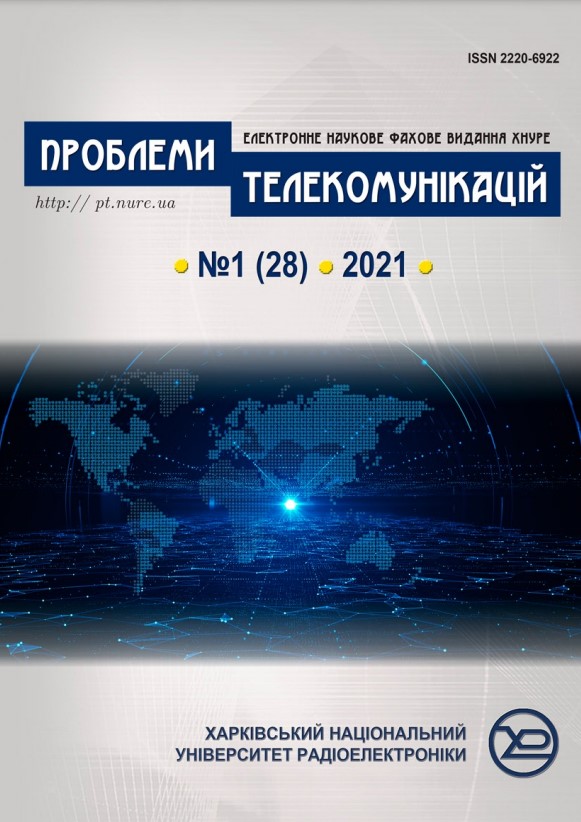Відмовостійка багатоадресна маршрутизація в інфокомунікаційній мережі із захистом шляху та пропускної здатності
DOI:
https://doi.org/10.30837/pt.2021.1.03Анотація
У роботі представлено та досліджено потокову математичну модель відмовостійкої маршрутизації багатоадресних потоків. За допомогою запропонованої математичної моделі технологічна задача відмовостійкої багатоадресної маршрутизації була зведена до оптимізаційної задачі булевого програмування. Основу математичної моделі складали лінійні критерій оптимальності та обмеження, які були представлені умовами реалізації одношляхової маршрутизації, збереження потоку, зв’язності багатоадресних маршрутів, запобігання перевантаження та створення циклів. Маршрутні змінні, за допомогою яких керувався процес багатоадресної маршрутизації, носили булевий характер. У межах моделі для кожного з багатоадресних потоків розраховуються оптимальні основний і резервний шляхи із реалізацією схем захисту шляху та пропускної здатності. За захист маршруту та пропускної здатності відповідали введені в модель умови-обмеження, які накладались на маршрутні змінні. Критерій оптимальності при визначенні оптимального та резервного багатоадресних шляхів на рівні маршрутних метрик враховував топологію мережі та пропускну здатність каналів зв’язку. Адитивний характер критерію орієнтував на пошук шляхів, які включали мінімальну кількість каналів зв’язку. Особливістю моделі є забезпечення пріоритетності у призначенні основним маршрутом того шляху, який мав меншу «довжину», аніж резервний шлях, відповідно до обраної маршрутної метрики. Проведений у роботі аналіз отриманих рішень підтвердив їх працездатність з точки зору реалізації зазначених схем захисту, а також їх оптимальність відповідно до варіантів використаних маршрутних метрик. Запропонована математична модель може бути застосована під час розробки протоколів відмовостійкої багатоадресної маршрутизації мультимедійних потоків.
##submission.downloads##
Опубліковано
Номер
Розділ
Ліцензія

Ця робота ліцензується відповідно до Creative Commons Attribution-NonCommercial-ShareAlike 4.0 International License.
Автори, які публікуються у цьому журналі, погоджуються з наступними умовами:- Автори залишають за собою право на авторство своєї роботи та передають журналу право першої публікації цієї роботи на умовах ліцензії Creative Commons Attribution License, котра дозволяє іншим особам вільно розповсюджувати опубліковану роботу з обов'язковим посиланням на авторів оригінальної роботи та першу публікацію роботи у цьому журналі.
- Автори мають право укладати самостійні додаткові угоди щодо неексклюзивного розповсюдження роботи у тому вигляді, в якому вона була опублікована цим журналом (наприклад, розміщувати роботу в електронному сховищі установи або публікувати у складі монографії), за умови збереження посилання на першу публікацію роботи у цьому журналі.
- Політика журналу дозволяє і заохочує розміщення авторами в мережі Інтернет (наприклад, у сховищах установ або на особистих веб-сайтах) рукопису роботи, як до подання цього рукопису до редакції, так і під час його редакційного опрацювання, оскільки це сприяє виникненню продуктивної наукової дискусії та позитивно позначається на оперативності та динаміці цитування опублікованої роботи (див. The Effect of Open Access).

